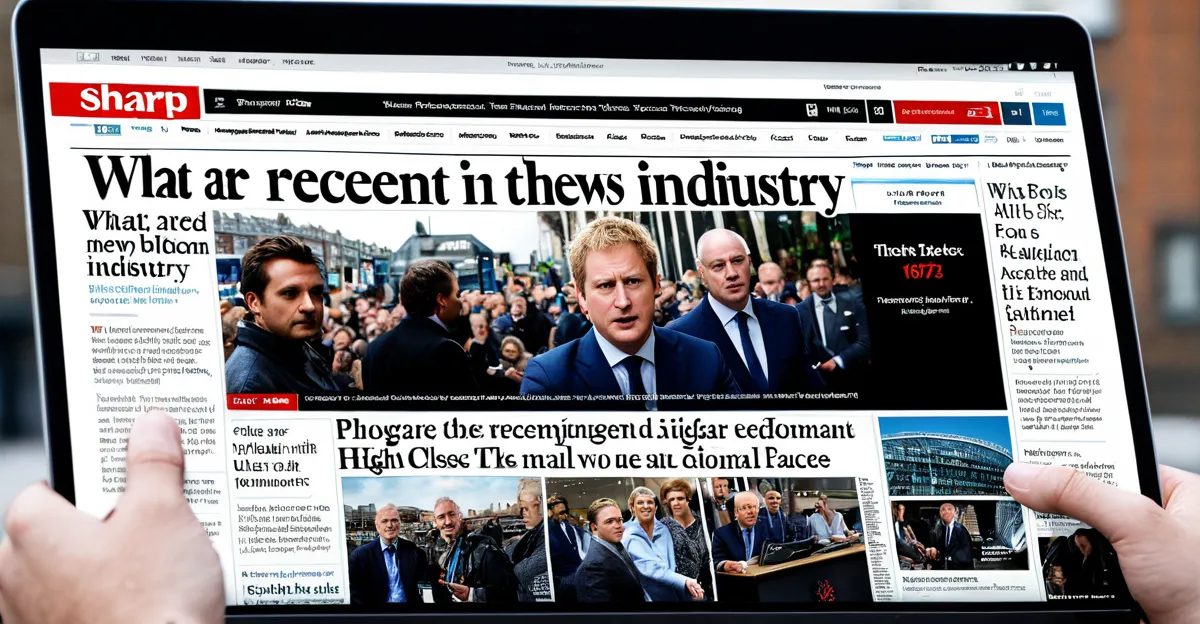Key Innovations Transforming UK Newsrooms
The UK news industry innovation is rapidly reshaping how stories are produced and shared. One of the most significant shifts involves automation in journalism, which streamlines editorial processes and workflows. Automated tools now handle repetitive tasks like transcription, basic reporting, and even headline generation, helping journalists focus on in-depth analysis and investigation rather than routine work.
Artificial intelligence (AI) integration in newsroom technology is a major driver of this transformation. AI assists in content creation by generating draft articles from data inputs, detecting trending topics through audience behavior analysis, and personalising news distribution to fit individual preferences. For example, AI algorithms can analyse reader patterns to prioritise which articles receive prominence on websites and apps.
Also to see : How Are Changing Weather Patterns Affecting UK Infrastructure?
Moreover, data-driven decision-making has become foundational in leading UK newsrooms. Analytics tools collect and interpret vast amounts of data—from web traffic to social engagement—guiding editorial choices and helping teams measure content performance. This equips newsrooms with clearer insights about what resonates with their audiences, enabling a more targeted and efficient journalism approach.
Overall, these innovations in the UK news industry innovation enhance productivity, improve content relevance, and drive better audience engagement. Newsrooms adopting automation tools, AI, and analytics are positioned to thrive in an increasingly competitive digital landscape.
Also to see : What Are the Latest Innovations Revolutionizing the UK News Industry?
Advances in Storytelling and Audience Engagement
Immersive storytelling is revolutionising how UK newsrooms connect with their audiences. By leveraging AR/VR news technologies, journalists create interactive experiences that transport readers beyond traditional text and images. This approach deepens engagement by allowing users to explore stories from multiple perspectives, fostering a more personal and memorable news encounter.
Interactive journalism expands formats through live streaming, data visualisation, and multimedia storytelling. For instance, live streams enable real-time reporting with direct audience feedback, while sophisticated data visualisations make complex information easier to digest. Multimedia storytelling combines video, audio, and graphics to craft richer narratives that appeal to diverse audience preferences.
User-generated content (UGC) plays a growing role in enhancing audience participation. Newsrooms encourage readers to contribute photos, videos, and opinions, creating a more collaborative news environment. This inclusion not only diversifies content but also empowers communities to share their experiences firsthand, which strengthens trust and relevance.
In sum, these advances—immersive tools, innovative formats, and active audience collaboration—are key to evolving news consumption. They respond to modern expectations for interactivity and engagement, making journalism more accessible and compelling in the digital age.
Monetisation Strategies: Paywalls and Subscription Models
In the evolving UK news industry innovation, paywall strategies have become central to sustaining journalism financially. Flexible paywalls, which allow limited free access before prompting payment, are increasingly favoured over rigid models. This approach encourages casual readers to engage initially while converting loyal users into subscribers, striking a balance between reach and revenue.
Leading UK news outlets have successfully implemented diverse digital news subscriptions tailored to their audiences. Many offer tiered subscriptions, providing premium-only content such as investigative reports, special editions, or ad-free experiences. These models enhance value perception, motivating readers to commit financially.
Micropayments and bundled offerings are emerging revenue models for news that further refine monetisation. Micropayments enable readers to pay small amounts for individual articles, accommodating more flexible consumption habits. Bundles combine access to multiple publications or content types, increasing subscriber appeal through variety and cost-effectiveness.
Together, these paywall and subscription innovations respond effectively to shifting reader preferences, supporting sustainable funding without diminishing audience engagement. By leveraging these strategies, UK newsrooms adapt to the digital landscape’s commercial challenges while maintaining quality journalism.
The Rise of Podcasts and Audio Content Integration
Podcasts have become a cornerstone of podcast journalism, rapidly expanding the reach of UK newsrooms beyond traditional formats. Major UK publications now produce regular news podcasts that offer in-depth analysis, interviews, and narrative storytelling. This growth reflects audience demand for on-the-go, easily accessible news content that fits into busy lifestyles.
Collaboration between news organisations and radio integration UK platforms creates powerful cross-channel synergies. By leveraging established radio audiences alongside digital podcast listeners, newsrooms amplify their presence and diversify content delivery. Such partnerships enable seamless sharing of resources, hosting, and promotional efforts, enhancing the quality and accessibility of audio news.
To capitalise on this trend, UK newsrooms are developing effective strategies for monetising audio content. These include sponsorship deals, branded segments within podcasts, and exclusive subscription-based audio series. The digital-first market demands innovative revenue approaches, allowing publishers to support high-quality audio journalism sustainably.
Overall, the integration of podcasts and audio content marks a significant shift in multimedia news formats, providing a dynamic and engaging way to consume news while opening new financial opportunities for UK news industry innovation.
